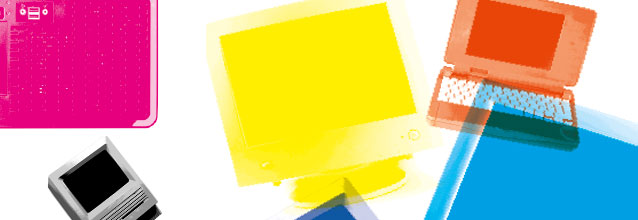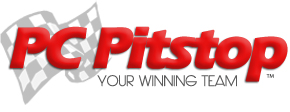Why Sometimes Upgrading Your Computer is the Cheaper Option

This is such a great article from Smarter Business Ideas...had to share!
If your computers are four or more years old, they’re artefacts of earlier technology eras – and they could be costing you big time.
The computers you bought a few years ago were designed to meet the processing demands of the day – and then some, depending on their specifications. But even the highest spec machine from four years ago can struggle to deliver the performance you need today.
To find out how a PC refresh can make a big difference to business productivity, Smarter met with Danielle Watts, Intel’s national marketing manager for Australia/New Zealand. What we learned about tired old computers versus the new generation of machines might surprise you.
Some business owners figure that as long as their old machines keep working they can hold off upgrading a little longer. That logic might suit mechanical devices designed to perform simple tasks but even so, the more you use them, the more they suffer wear and tear.
It also ignores the many competitive advantages and lifestyle-enhancements offered by innovative technologies. “Given they’re running their businesses on those old computers the consequences can be frightening,” ponders Watts. “What if they lost all that data?”
Moving business records safely
While it’s fairly easy to calculate the costs of repairing, upgrading or replacing components in your IT set up [see below: “Maintenance costs add up”], it’s harder to put a value on the data you own. “Businesses rely so heavily on databases, so it’s understandable you’d be worried about moving them,” Watts acknowledges, “An expert service provider can help transfer accounts, HR and customer records safely and securely – the upgrade decision could include looking at server technology or Cloud-based tools to support and manage the business.”
Adding to the woes of outdated technology are security issues: “If you’re still using Windows XP you really need to upgrade,” advises Watts. “As of April this year technical support and security updates for XP from Microsoft ended, so your laptop or PC is far more vulnerable to malicious attacks.”
SEE ALSO:
Slow machines cost time and productivity
Older PCs not only cost more to maintain, their performance also diminishes as they age. Consider recording the time lost to PCs taking forever to start-up, running slow or not working at all: “That’s a lot of lost productivity,” notes Watts. “If you value your employees you want to provide them with efficient tools. Investing in new technology shows that you value their contribution – and they’ll respect that.”
Can you work three times faster?
If you like spending time making a nice cup of tea or coffee while you wait for your computer to wake up you might want to update your schedule. According to system performance benchmarks from Intel the latest Intel processor-based systems running Windows 8.1 Pro typically start-up within a handful of seconds – and when you’re hard at work running your business with them, they’ll run everyday computing processes more than three times faster than a four-year-old system.
Latest devices are fast and ultra-portable
“Start-up time and battery life are especially important for road warriors,” says Watts. “You don’t want to wait so you can enter an order, start a presentation or check inventory. Devices with fourth generation Intel processors also work for up to 10 hours on battery power – a big advantage over the 2.5 hours of older PCs – and include management tools specifically for businesses.
“We’re running our personal and business lives on them, so it helps that notebooks are lighter (some less than a kilo), thinner and offer powerful multi-tasking. On average they cost $200 less than PCs four years ago, so over time the cost to replace rather than repair becomes a lot more attractive.”
Maintenance costs add up
All machines need some maintenance but as a machine ages it can break down more often and cost more to repair. The Techaisle May 2013 whitepaper, “Small Business PC Refresh Study”, reviewed direct and indirect costs of maintaining PCs. The research found:
- Direct maintenance costs (repairs and upgrades) – jump more than 33 per cent for older PCs. (Average yearly costs for a PC less than four years old: US$324 to repair and US$95 to upgrade; costs for a PC more than four years old: US$427 to repair and US$134 to upgrade.)
- Lost productivity costs (downtime) – double from an average of 21 hours a year of lost work time on a newer PC to 42 hours a year for an older PC.
Did you know?
36% of small businesses use PCs that are four+ years old
Source: Techaisle June 2013 whitepaper, “The Ageing PC Effect – Exposing Financial Impact for Small Business.”
42 lost work hours on average every year due to an old PC needing repairs
Source: Techaisle May 2013 white paper, “Small Business PC Refresh Study”
Older PCs might handle up to 5 applications simultaneously vs newer PCs that easily run 8 applications simultaneously
Source: Techaisle May 2013 white paper, “Small Business PC Refresh Study”
Case study: Brightstar
After a successful stint at a big software firm, Jon Yeo set up Brightstar in 2003 to coach businesses on using technology to improve their lives. More recently his passion for ‘ideas worth sharing’ also motivated him to become the licensee and curator for TedxMelbourne.
His studies in information management and organisational behavior serve him well to help clients embrace more rewarding and productive ways of working: “They often don’t have a technology problem – they know they need it – they have a people and process problem,” he explains. “They aren’t making the most of what is available.”
And he’s adamant that old technology is demotivating: “Old systems are slow, inaccessible and unresponsive compared to today’s technology. If you’re not thinking about upgrading now you’re making it much harder to compete at all in the next two to three years.”
Yeo suggests that if you’ve accepted your old systems need replacing then you know you have to transfer your valuable business data somewhere. So why not make it easier and faster to access and manage?
“Think about what you really need to convert across – it might not be so complex. Cloud services, ultraportable laptops, mobile devices and integrated communications help us make greater use of our information,” he explains.
“I now have a very small laptop that weighs less than a kilogram and does everything and more that my old desktop and laptop could do combined, faster. Because I’m on the road a lot, I have seven to eight hours of battery time on my new machine versus two hours maximum on my old laptop – there is no competition. “I also have a stylus-based tablet so I can take client notes once and they’re stored in the Cloud. I used to have a heavy laptop, a paper compendium and my briefcase full of paperwork – I still smile when I think about hauling it all through airport security.”
Find the right devices for the job
In three simple steps find out the ideal technology mix for your business – and how much your older computers are really costing you: http://smb.intel.com.au/start
Call into PC Pitstop today and discuss the best upgrade option for you and your budget!

#02 65 841 551 :: sales@pcpitstop.com.au :: www.pcpitstop.com.au/blog
 |
 |
 |
 |
 |



